 W
W21 Lessons for the 21st Century is a book written by bestseller Israeli author Yuval Noah Harari and published in August 2018 by Spiegel & Grau in the US and by Jonathan Cape in the UK and dedicated to his husband, Itzik.
 W
W2052 – A Global Forecast for the Next Forty Years is a 2012 book describing trends in global development. It is written by Jørgen Randers and is a follow-up to The Limits to Growth, which in 1972 was the first worldwide report by the Club of Rome.
 W
W2081: A Hopeful View of the Human Future is a 1981 book by Princeton physicist Gerard K. O'Neill. The book is an attempt to predict the social and technological state of humanity 100 years in the future. O'Neill's positive attitude towards both technology and human potential distinguished this book from gloomy predictions of a Malthusian catastrophe by contemporary scientists. Paul R. Ehrlich wrote in 1968 in The Population Bomb, "in the 1970s and 1980s hundreds of millions of people will starve to death". The Club of Rome's 1972 Limits to Growth predicted a catastrophic end to the Industrial Revolution within 100 years from resource exhaustion and pollution.
 W
WAbundance: The Future Is Better Than You Think is a book by Peter H. Diamandis and Steven Kotler that was published in 2012. The writers refer to the book's title as being a future where nine billion people have access to clean water, food, energy, health care, education, and everything else that is necessary for a first world standard of living, thanks to technological innovation.
 W
WThe Age of Intelligent Machines is a non-fiction book about artificial intelligence by inventor and futurist Ray Kurzweil. This was his first book and the Association of American Publishers named it the Most Outstanding Computer Science Book of 1990. It was reviewed in The New York Times and The Christian Science Monitor. The format is a combination of monograph and anthology with contributed essays by artificial intelligence experts such as Daniel Dennett, Douglas Hofstadter, and Marvin Minsky.
 W
WThe Age of Spiritual Machines: When Computers Exceed Human Intelligence is a non-fiction book by inventor and futurist Ray Kurzweil about artificial intelligence and the future course of humanity. First published in hardcover on January 1, 1999 by Viking, it has received attention from The New York Times, The New York Review of Books and The Atlantic. In the book Kurzweil outlines his vision for how technology will progress during the 21st century.
 W
W"As We May Think" is a 1945 essay by Vannevar Bush which has been described as visionary and influential, anticipating many aspects of information society. It was first published in The Atlantic in July 1945 and republished in an abridged version in September 1945—before and after the atomic bombings of Hiroshima and Nagasaki. Bush expresses his concern for the direction of scientific efforts toward destruction, rather than understanding, and explicates a desire for a sort of collective memory machine with his concept of the memex that would make knowledge more accessible, believing that it would help fix these problems. Through this machine, Bush hoped to transform an information explosion into a knowledge explosion.
 W
WBrave New World is a dystopian social science fiction novel by English author Aldous Huxley, written in 1931 and published in 1932. Largely set in a futuristic World State, whose citizens are environmentally engineered into an intelligence-based social hierarchy, the novel anticipates huge scientific advancements in reproductive technology, sleep-learning, psychological manipulation and classical conditioning that are combined to make a dystopian society which is challenged by only a single individual: the story's protagonist. Huxley followed this book with a reassessment in essay form, Brave New World Revisited (1958), and with his final novel, Island (1962), the utopian counterpart. The novel is often compared to George Orwell's Nineteen Eighty-Four.
 W
WA Brief History of the Future is a speculative futurology book about the next 50 years by Jacques Attali. The original edition was published by Fayard in 2006.
 W
WThe Coming Global Superstorm (ISBN 0-671-04190-8) is a 1999 book by Art Bell and Whitley Strieber, which warns that global warming might produce sudden and catastrophic climate change.
 W
WCritical Path is a book written by US author and inventor R. Buckminster Fuller with the assistance of Kiyoshi Kuromiya. First published in 1981, it is alongside Operating Manual for Spaceship Earth one of Fuller's best-known works. Vast in its scope, it describes Fuller's own vision of the development of human civilization, economic history, and his highly original economic ideology based, amongst other things, on his detailed description of why scarcity of resources need no longer be a decisive factor in global politics.
 W
WDark Age Ahead is a 2004 book by Jane Jacobs describing what she sees as the decay of five key "pillars" in "North America": community and family, higher education, science and technology, taxes and government responsiveness to citizen's needs, and self-regulation by the learned professions.
 W
WThe Earth After Us is a 2008 non-fiction book by Jan Zalasiewicz about the geological legacy that humans might one day leave behind them.
 W
WEngines of Creation: The Coming Era of Nanotechnology is a 1986 molecular nanotechnology book written by K. Eric Drexler with a foreword by Marvin Minsky. An updated version was released in 2007. The book has been translated into Japanese, French, Spanish, Italian, Russian, and Chinese.
 W
WEternity: Our Next Billion Years is a non-fiction book which speculates about the future of mankind written by science writer Michael Hanlon. The book is a combination of non-fiction discussions based on science about what the future might look like, interspersed with more imaginative guesses about what life will look like thousands, and millions of years in the future.
 W
WFamine 1975! America's Decision: Who Will Survive? is a best-selling 1967 book by William and Paul Paddock. The brothers describe the rapidly growing population of the world, and a situation in which they believe it would be impossible to feed the entire global population within the short-term future. They believed that widespread famine would be the inevitable result, by 1975.
 W
WThe Future of Humanity: Terraforming Mars, Interstellar Travel, Immortality, and Our Destiny Beyond Earth is a popular science book by the futurist and physicist Michio Kaku. The book was initially published on February 20, 2018 by Doubleday. The book was on The New York Times Best Seller list for four weeks.
 W
WThe Future of the Mind: The Scientific Quest to Understand, Enhance, and Empower the Mind is a popular science book by the futurist and physicist Michio Kaku. The book was initially published on February 25, 2014 by Doubleday.
 W
WFuture Shock is a 1970 book by the futurist Alvin Toffler, written together with his spouse Adelaide Farrell, in which the authors define the term "future shock" as a certain psychological state of individuals and entire societies. The shortest definition for the term in the book is a personal perception of "too much change in too short a period of time". The book, which became an international bestseller, grew out of an article "The Future as a Way of Life" in Horizon magazine, Summer 1965 issue. The book has sold over 6 million copies and has been widely translated.
 W
WPatrick Dixon is an author and business consultant, often described as a futurist, and chairman of the trends forecasting company Global Change Ltd. He is also founder of the international AIDS agency ACET and Chairman of the ACET International Alliance.
 W
WGlobal Catastrophic Risks is a 2008 non-fiction book edited by philosopher Nick Bostrom and astronomer Milan M. Ćirković. The book is about issues such as asteroid impacts, gamma-ray bursts, Earth-based natural catastrophes, nuclear war, terrorism, global warming, biological weapons, totalitarianism, advanced nanotechnology, artificial general intelligence, and social collapse. The book also addresses overarching issues such as policy responses and methods for predicting and managing catastrophes.
 W
WGreat Mambo Chicken and the Transhuman Condition is a non-fiction book copyright 1990 by Ed Regis, an American author and educator, that presents a lighthearted look at scientific visionaries planning for a future with "post-biological" people, space colonization, nanotechnology, and cryonics. The book emphasizes the personality and projects of Robert Truax, Eric Drexler, Gerard K. O'Neill, Chris Langton, Freeman Dyson, Hans Moravec, Ralph Merkle, Robert Forward, Keith Henson, Carolyn Meinel, Gary Hudson, Saul Kent, and a number of others.
 W
WHacking Matter is a 2003 book by Wil McCarthy. It deals with "programmable matter" that, he predicts, will someday be able mimic the properties of any natural atom, and ultimately also non-natural atoms. McCarthy predicts that programmable matter will someday change human life profoundly, and that its users will have the ability to program matter itself - to change it, from a computer, from hard to soft, from paper to stone, from fluorescent to super-reflective to invisible. In his science fiction, he calls this technology "Wellstone".
 W
WHomo Deus: A Brief History of Tomorrow is a book written by Israeli author Yuval Noah Harari, professor at the Hebrew University in Jerusalem. The book was first published in Hebrew in 2015 by Dvir publishing; the English-language version was published in September 2016 in the United Kingdom and in February 2017 in the United States.
 W
WHow to Create a Mind: The Secret of Human Thought Revealed is a non-fiction book about brains, both human and artificial, by the inventor and futurist Ray Kurzweil. First published in hardcover on November 13, 2012 by Viking Press it became a New York Times Best Seller. It has received attention from The Washington Post, The New York Times and The New Yorker.
 W
WHuman Compatible: Artificial Intelligence and the Problem of Control is a 2019 non-fiction book by computer scientist Stuart J. Russell. It asserts that risk to humanity from advanced artificial intelligence (AI) is a serious concern despite the uncertainty surrounding future progress in AI. It also proposes an approach to the AI control problem.
 W
WThe Industries of the Future is a 2016 non-fiction book written by Alec Ross, an American technology policy expert and the former Senior Advisor for Innovation to Secretary of State Hillary Clinton during her time as Secretary of State. Ross is also a senior fellow at Columbia University, a former night-shift janitor, and a Baltimore teacher. Ross launched a campaign for the Governor of Maryland in 2017. The book explores the forces that will change the world in robotics, genetics, digital currency, coding and big data.
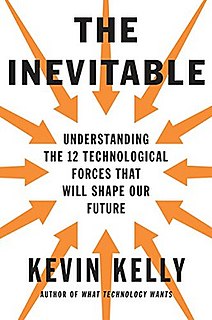 W
WThe Inevitable is a 2016 nonfiction book by Kevin Kelly that forecasts the twelve technological forces that will shape the next thirty years.
 W
WThe Keys of This Blood is a 1990 non-fiction geopolitical book by former Catholic Jesuit priest Malachi Martin.
 W
WLife 3.0: Being Human in the Age of Artificial Intelligence is a book by Swedish-American cosmologist Max Tegmark from MIT. Life 3.0 discusses Artificial Intelligence (AI) and its impact on the future of life on Earth and beyond. The book discusses a variety of societal implications, what can be done to maximize the chances of a positive outcome, and potential futures for humanity, technology and combinations thereof.
 W
WLife in 2050 is a 2011 futurology book by Ulrich Eberl. The book deals with the effects that climate change, peak oil and the 2000s energy crisis has on the year of the mid-21st century.
 W
WThe Limits to Growth (LTG) is a 1972 report on the exponential economic and population growth with a finite supply of resources, studied by computer simulation. Commissioned by the Club of Rome, the findings of the study were first presented at international gatherings in Moscow and Rio de Janeiro in the summer of 1971. The report's authors are Donella H. Meadows, Dennis L. Meadows, Jørgen Randers, and William W. Behrens III, representing a team of 17 researchers.
 W
WMarch of the Machines: Why the New Race of Robots Will Rule the World, published in paperback as March of the Machines: The Breakthrough in Artificial Intelligence (2004), is a book by Kevin Warwick. It presents an overview of robotics and artificial intelligence (AI), often focusing on anecdotes of Warwick's own work, and then imagines future scenarios. In particular, Warwick finds it likely that such AIs will become smart enough to replace humans, and humans may be unable to stop them.
 W
WThe Meaning of the 21st Century: A Vital Blueprint for Ensuring Our Future is a 2006 nonfiction book by British technology consultant James Martin.
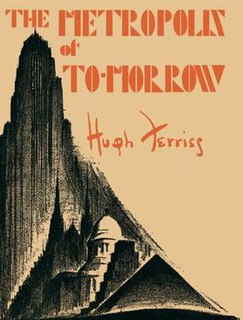 W
WThe Metropolis of Tomorrow is a 1929 book written and illustrated by Hugh Ferriss. Prominently featuring 60 of Ferriss' drawings, the book is divided into three sections. The first, "Cities of Today", underscores the lack of planning in contemporary cities and the powerful psychological impact that cities have on their inhabitants while also profiling 18 influential modern buildings in five cities. The second section, "Projected Trends", prominently discusses practical concerns related to population density and traffic congestion, demonstrates Ferriss' adherence to some of the key elements of modern architecture, and then analyzes projected trends in urban design that he supports, as well as a few that he opposes. The third and final section, "An Imaginary Metropolis", describes an ideal future city complete with towering skyscrapers spaced well apart from each other, broad avenues, and a strongly geometric city layout based around centers and sub-centers of buildings that are segregated by function.
 W
WThe Millennial Project: Colonizing the Galaxy in Eight Easy Steps by Marshall T. Savage is a book in the field of exploratory engineering that gives a series of concrete stages the author believes will lead to interstellar colonization. Many specific scientific and engineering details are presented, as are numerous issues involved in space colonization.
 W
WThe Next 100 Years is a 2009 book by George Friedman. In the book, Friedman attempts to predict the major geopolitical events and trends of the 21st century. Friedman also speculates in the book on changes in technology and culture that may take place during this period.
 W
WThe Next Fifty Years: Science in the First Half of the Twenty-First Century is a 2002 collection of essays by twenty-five well-known scientists, edited by Edge Foundation founder John Brockman, who wrote the introduction.
 W
WThe Next Hundred Million: America in 2050 is a non-fiction book by American economist and demographer Joel Kotkin. The author outlines a world in which the growing US population reaches four hundred million by 2050. He argues that the US will become more diverse and more competitive, and he predicts that the US will experience continual economic growth that advances the populations' standard of living. Kotkin writes that the US "should emerge by mid-century as the most affluent, culturally rich and successful nation in human history".
Nine Chains to the Moon is a book by R. Buckminster Fuller, first published in 1938. The title refers to the observation that, when the book was written, the world population of humans, if stood one atop another, could form chains that would reach back and forth between Earth and the Moon nine times.
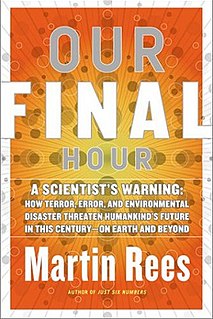 W
WOur Final Hour is a 2003 book by the British Astronomer Royal Sir Martin Rees. The full title of the book is Our Final Hour: A Scientist's Warning: How Terror, Error, and Environmental Disaster Threaten Humankind's Future In This Century - On Earth and Beyond. It was published in the United Kingdom under the more prosaic title Our Final Century: Will the Human Race Survive the Twenty-first Century?. The premise of the book is that the Earth and human survival are in far greater danger from the potential effects of modern technology than is commonly realised, and that the 21st century may be a critical moment in history when humanity's fate is decided. Rees discusses a range of existential risks confronting humanity, and estimates that the probability of extinction before 2100 CE is around 50 percent, based on the possibility of malign or accidental release of destructive technology.
 W
WOur Final Invention: Artificial Intelligence and the End of the Human Era is a 2013 non-fiction book by the American author James Barrat. The book discusses the potential benefits and possible risks of human-level or super-human artificial intelligence. Those supposed risks include extermination of the human race.
 W
WOut of Control: The New Biology of Machines, Social Systems, and the Economic World (ISBN 978-0201483406) is a 1992 book by Kevin Kelly. Major themes in Out of Control are cybernetics, emergence, self-organization, complex systems, negentropy and chaos theory and it can be seen as a work of techno-utopianism.
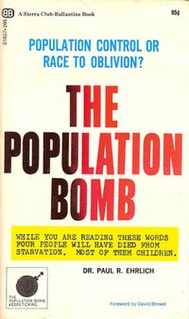 W
WThe Population Bomb is a best-selling book written by Stanford University Professor Paul R. Ehrlich and his wife, Anne Ehrlich, in 1968. It predicted worldwide famine in the 1970s and 1980s due to overpopulation, as well as other major societal upheavals, and advocated immediate action to limit population growth. Fears of a "population explosion" were widespread in the 1950s and 1960s, but the book and its author brought the idea to an even wider audience.
 W
WPowershift: Knowledge, Wealth and Violence at the Edge of the 21st Century is the third book in a trilogy written by the futurist Alvin Toffler, following Future Shock (1970) and The Third Wave (1980). The hardcover first edition was published October 1, 1990.
 W
WThe Precipice: Existential Risk and the Future of Humanity is a 2020 non-fiction book by the Australian philosopher Toby Ord, of the Future of Humanity Institute in Oxford. It argues that safeguarding humanity's future is among the most important moral issues of our time.
 W
WRapture for the Geeks: When AI Outsmarts IQ (2009) is a non-fiction book by American Law Professor Richard Dooling. The book provides an alarming window into a hypothetical future technological singularity, where machine intelligence outstrips human intelligence. The book also provides a historical review of man's relationship with machines, including dangers caused by other technologies such as nuclear weaponry.
 W
WRevolutionary Wealth is a book written by futurists Alvin Toffler and his wife Heidi Toffler, first published in 2006 by Knopf. It is a continuation of The Third Wave (1980), which itself is a sequel to Future Shock (1970).
 W
WRise of the Robots: Technology and the Threat of a Jobless Future is a 2015 book by American futurist Martin Ford. Rise discusses the impact accelerating change and artificial intelligence will have on the labor market. His thesis is that there will be great social and economic disruption, as educated workers will no longer be able to find employment; unlike in previous technological revolutions, very few new jobs will be created in the course of the ongoing disruption.
 W
WRobots Will Steal Your Job, but That's OK: How to Survive the Economic Collapse and Be Happy is a book by Federico Pistono that was published in 2012.
 W
WScience Fiction and Futurology is a monograph of Stanisław Lem about science fiction and futurology, first printed by Wydawnictwo Literackie in 1970.
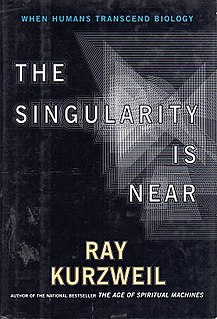 W
WThe Singularity Is Near: When Humans Transcend Biology is a 2005 non-fiction book about artificial intelligence and the future of humanity by inventor and futurist Ray Kurzweil.
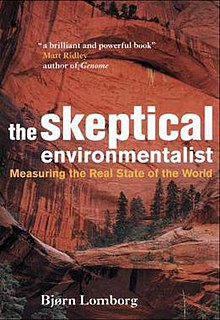 W
WThe Skeptical Environmentalist: Measuring the Real State of the World is a book by Danish environmentalist author Bjørn Lomborg, controversial for its claims that overpopulation, declining energy resources, deforestation, species loss, water shortages, certain aspects of global warming, and an assortment of other global environmental issues are unsupported by statistical analysis of the relevant data. It was first published in Danish in 1998, while the English edition was published as a work in environmental economics by Cambridge University Press in 2001.
 W
WSumma Technologiae is a 1964 book by Polish author Stanisław Lem. Summa is one of the first collections of philosophical essays by Lem. The book exhibits depth of insight and irony usual for Lem's creations. The name is an allusion to Summa Theologiae by Thomas Aquinas.
 W
WPatrick Dixon is an author and business consultant, often described as a futurist, and chairman of the trends forecasting company Global Change Ltd. He is also founder of the international AIDS agency ACET and Chairman of the ACET International Alliance.
 W
WThe Third Wave is a 1980 book by Alvin Toffler. It is the sequel to Future Shock (1970), and the second in what was originally likely meant to be a trilogy that was continued with Powershift: Knowledge, Wealth and Violence at the Edge of the 21st Century in 1990. A new addition, Revolutionary Wealth, was published, however, in 2006 and may be considered as a major expansion of The Third Wave.
 W
WTo Be a Machine: Adventures Among Cyborgs, Utopians, Hackers, and the Futurists Solving the Modest Problem of Death is a 2017 nonfiction book by Slate columnist and literary journalist Mark O'Connell. The book is a breezy, but skeptical, gonzo-journalistic tour of transhumanism and radical life extension. It chronicles O'Connell's travels around the world to interview prominent transhumanists.
 W
WTomorrowland: Our Journey from Science Fiction to Science Fact is a 2015 non-fiction book by science journalist Steven Kotler and published by Amazon Publishing.
 W
WThe Transparent Society (1998) is a non-fiction book by the science-fiction author David Brin in which he forecasts social transparency and some degree of erosion of privacy, as it is overtaken by low-cost surveillance, communication and database technology, and proposes new institutions and practices that he believes would provide benefits that would more than compensate for lost privacy. The work first appeared as a magazine article by Brin in Wired in late 1996. In 2008, security expert Bruce Schneier called the transparent society concept a "myth", claiming it ignores wide differences in the relative power of those who access information.
 W
WThe World Without Us is a 2007 non-fiction book about what would happen to the natural and built environment if humans suddenly disappeared, written by American journalist Alan Weisman and published by St. Martin's Thomas Dunne Books. It is a book-length expansion of Weisman's own February 2005 Discover article "Earth Without People". Written largely as a thought experiment, it outlines, for example, how cities and houses would deteriorate, how long man-made artifacts would last, and how remaining lifeforms would evolve. Weisman concludes that residential neighborhoods would become forests within 500 years, and that radioactive waste, bronze statues, plastics, and Mount Rushmore would be among the longest-lasting evidence of human presence on Earth.